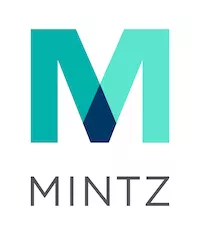- with readers working within the Chemicals and Retail & Leisure industries
- within Law Practice Management topic(s)
The New York City Department of Consumer and Worker Protection ("DCWP") has released its highly anticipated FAQs, providing additional guidance to employers seeking to comply with Local Law 144. As we discussed here and here, Local Law 144 prohibits employers and employment agencies from using an automated employment decision tool (AEDT) in New York City for such actions as hiring and promotion (or screening in the hiring or promotion process) unless they ensure a bias audit was done and that required notices were provided. Aptly titled "Automated Employment Decision Tools: Frequently Asked Questions," the nearly six-page set of FAQs is broken down into seven sections, touching on each major aspect of Local Law 144. In this summary, we highlight the most salient guidance provided by the DCWP in its FAQs.
The FAQs Clarify the Scope of the Law's Geographic Reach
Local Law 144 covers the use of AEDTs by employers or employment agencies "in the city"— a phrase that appears throughout the text of the law. While the law leaves this phrase open to interpretation, the FAQs provide a bit more guidance. Specifically, AEDTs are used "in the city" (and are thus subject to the law's requirements) where:
- The job location is at an office in NYC, at least part time; OR
- The job is fully remote but the location associated with it is an office in NYC; OR
- The location of the employment agency using the AEDT is NYC or, if the location of the employment agency is outside NYC, one of the bullets above is true.
Even with this additional guidance, the chosen definition still leaves room for interpretation. For example, what is meant by the second bullet, i.e. remote work where "the location associated with it is an office in NYC?" If construed broadly, could this definition bring within the ambit of the law remote positions that report to several offices (including one in NYC), with these positions thus considered "associated with" a NYC-based office? Relatedly, how "associated" with an office must a remote position be to be covered? This too is not addressed by the FAQs.
The third bullet also appears to expand the scope of the law to apply to jobs that are not located in NYC. For example, would an employment agency located in NYC, even if conducting searches for jobs located entirely outside of NYC, need to comply with Local Law 144 to the extent it is using covered AEDTs as part of its placement search? Similarly, what if an employment agency is conducting a job search for a position that in theory could be associated with a NYC office – would that also fall within the ambit of the law? Yet, if Local Law 144 applies, it is the job candidates who are New York City residents that must receive notice that the employer or employment agency uses an AEDT. This is seemingly incongruous with some of the definitions above.
Thus, while we have some clarity as to what "in the city" means, the FAQs do create some confusion that will likely persist until it becomes clear how the DCWP enforces the law and/or how courts interpret it.
There Are No "Pass or Fail" Requirements Built into the Bias Audits
Employers and employment agencies are required to publish a summary of the results of the most recent AEDT bias audit and the date when the use of the AEDT began. But, other than publication and notice requirements, Local Law 144 does not require any specific action based on the results of an AEDT bias audit (e.g., where results point to bias where the tool is used). Rather, as the FAQs reiterate, employers and employment agencies must comply with all relevant anti-discrimination laws and rules to determine any necessary actions based on the results of an AEDT bias audit.
Employers therefore need to proceed very cautiously before conducting "office" bias audits and broadcasting them to the public.
The Law Does Not Appear To Cover Employer Recruitment or Outreach Efforts
The FAQs confirm that the use of AEDTs to "assess someone who is not an employee being considered for promotion and who has not applied for a specific position for employment" is not covered by Local Law 144. This is in response to whether the law applies if an employer or employment agency uses an AEDT "to scan a resume bank, conduct outreach to potential candidates, or invite applications."
Interestingly, this appears to remove from the law's reach targeted ads by employers or employment agencies for job opportunities, referred to as "micro-targeting." Micro-targeting often relies upon certain behavioral patterns exhibited by individuals (or in this case, job seekers) to ensure that job advertisements are directed towards a certain pool of potential candidates. While the FAQs make clear that outreach powered by AI may not be covered by Local Law 144, this does not mean that such practices are outside of the reach of federal, state, or local anti-discrimination laws. Thus, employers should nevertheless ensure that job advertisements—whether powered by AI or not—target individuals or pools of potential candidates based upon objective criteria that portend success in the given role, not any protected characteristic.
"Statistical Significance" of a Bias Audit Remains Undefined
The DCWP declined to "set a specific requirement for statistical significance" with respect to the required bias audit. Statistical significance helps ensure that a given result or observation in a sample is unlikely to be the product of chance. This is, of course, important in the context of a bias audit where the results could be indicative of disparate impact. Rather than define "statistical significance," the DCWP instead chose to afford independent auditors some discretion, providing that where "an independent auditor determines there is insufficient historical data to conduct a statistically significant bias audit, test data may be used to conduct the bias audit."
Where Demographic Information is Unavailable or Insufficient, Employers May Use Test Data or Historical Data from Other Employers
A significant concern expressed by many stakeholders during the rulemaking process was how to conduct a bias audit where an employer either did not have demographic information or lacked significant historical data. The FAQs provide some guidance here. First, the guidance confirms that where employers and employment agencies do not collect demographic data or have minimal historical data, they may use test data to conduct a bias audit. Where insufficient historical data is available, employers may also use the historical data of other employers or employment agencies to conduct a bias audit. But, employers and employment agencies can only rely on such data if they provided historical data from their use of the AEDT to the independent auditor conducting the bias audit, or where it is the first time the employer is using the AEDT. Thus, employers and employment agencies can take some comfort here, as the guidance appears to offer them some flexibility in determining how best to proceed where they lack sufficient data.
Employers May Not Impute Demographic Information
Importantly, the guidance confirms that employers and employment agencies are not permitted to impute or infer demographic information where none is available (i.e., by using a proxy methodology), and instead may either use: (i) historical data of other employers or employment agencies; or (ii) test data. This is critical for employers and/or employment agencies that do not collect certain demographic information, and thus will need to determine which data they want to rely upon in conducting the bias audit. It is important to note, however, that neither the FAQs nor the law mandate that employers and employment agencies begin collecting this data (although, in practice most employers with 100 or more employees must submit EEO-1 Component 1 data, which includes the same race, ethnicity, and sex information required to conduct Local Law 144's bias audit).
"Test Data" Remains Largely Undefined
As employers will recall from the rules issued by DCWP, "test data" refers to "data used to conduct a bias audit that is not historical data." While the rules provide three examples illustrating how an employer could use certain data, the FAQs do not explicitly define "test data." The FAQs similarly do not provide a clear definition or framework for what might constitute "test data." Instead, and purportedly "[t]o allow for flexibility and development of best practices," the FAQs explain that the summary of the results of the bias audit must include the source and explanation of the data used to conduct the bias audit and, where test data is used, explain how the data was sourced or developed.
An AEDT Vendor May Have a Bias Audit Conducted on Its Own Tool
The FAQ confirms that while AEDT vendors—those responsible for creating or developing an AEDT—may not perform a bias audit of its own tool, they may have an independent auditor conduct a bias audit of its tool. DCWP was quick to confirm, however, that employers and employment agencies are ultimately responsible for ensuring that they do not use an AEDT unless a bias audit was done, and that the vendor that created the AEDT is not responsible for a bias audit of the tool.
DCWP is Ready to Enforce Local Law 144
Enforcement of Local Law 144 became effective July 5, 2023. The FAQs provide that complaints concerning compliance with Local Law 144 can be submitted by contacting 311 or by visiting the DCWP's website at nyc.gov/dcwp. Complainants must include all of the following information: (i) details of the job posting or position, (ii) the name and type of AEDT, (iii) notice provided, if any, and (iv) an explanation of the suspected violation (for example, AEDT used without notice). Claims of discrimination involving AEDT use should go to the City's Commission on Human Rights which enforces the NYC Human Rights Law, and the DCWP will refer any claims of discrimination to the City Commission.
Where Do Employers and Employment Agencies Go From Here?
These FAQs provide helpful guidance to employers and employment agencies seeking to confirm compliance strategies. Now that enforcement is in effect, it is even more critical that employers and employment agencies take the steps we have previously recommended (here, here, and here). Specifically, steps employers and employment agencies should consider taking immediately include:
- Conducting an inventory of hiring, promotion, and performance evaluation processes to ascertain what AEDTs (if any) are used and whether they fall within the ambit of the law.
- Reviewing practices governing and surrounding demographic data collection and determining whether: (i) there is any data missing; and (ii) there is sufficient data to conduct a bias audit. While an independent auditor is, according to DCWP, the arbiter of statistical significance, the employer or employment agency can still ensure—either on its own or in collaboration with an independent auditor—whether it has sufficient data to conduct a bias audit.
- Ensuring that service agreements with AEDT vendors include certain representations and warranties concerning compliance with Local Law 144 and, if applicable, that the vendor has had an independent auditor conduct a bias audit of the given AEDT before the employer purchases and/or implements the tool.
- Strategizing to determine how the published "summary" of the bias audit results will actually appear in practice. While the final rules and FAQs confirm what the summary must include, they do not provide recommendations as to form, leaving that within the discretion of employers and employment agencies.
While the FAQs are helpful, additional guidance will likely come from the DCWP's actual enforcement of the law. In the meantime, we recommend that employers and employment agencies take the steps outlined above (and those in our earlier posts), and consult with counsel to ensure effective compliance. We will monitor the DCWP's enforcement priorities and actions as they unfold in the coming months.
The content of this article is intended to provide a general guide to the subject matter. Specialist advice should be sought about your specific circumstances.




